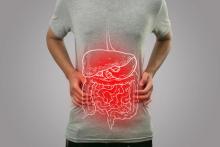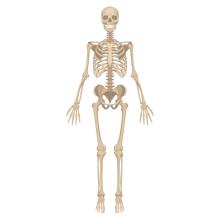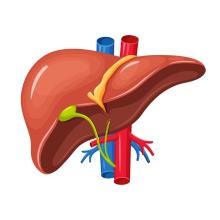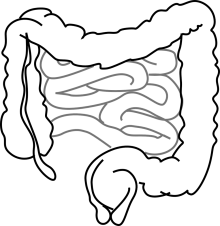חדשות המחקר

Lior Lowenstein: Conventional vaginal approach vs. transvaginal natural orifice transluminal endoscopic surgery for treating apical prolapse, a randomized controlled study (Eur J Obstet Gynecol Reprod Biol .)
Vaginal hysterectomy combined with uterosacral suspension (USLS) is a technique for treating pelvic organ prolapse. Vaginal natural orifice transluminal endoscopic surgery (vNOTES) has been described as an alternative minimal invasive approachfor treating various gynecological and non-gynecological pathologies. The aim was to compare the surgical time between conventional vaginal hysterectomy combined with USLS and vNOTES hysterectomy combined with USLS.

Khalaf Kridin: Comparison of safety profile in patients with atopic dermatitis treated with dupilumab or conventional systemic treatment: real world data from the US network (J Dermatolog Treat . )
Safety of dupilumab in atopic dermatitis (AD) was investigated in randomized controlled trials (RCT). However, head-to-head trials comparing with conventional systemic drugs are lacking and large real-world data on the long-term safety profile as compared are scarce. Objective: To compare long-term safety profile of dupilumab with conventional systemic drugs used in the management of moderate to severe AD.

Osama Khayat, Maamoun Basheer, Mayss Derawy, Nimer Assy: Early Elevated Inflammatory Markers in SARS-CoV-2 Vaccinated Patients Are Associated with Reduced Mortality, Morbidity, and Lung Injury (Life (Basel) . )
The development of vaccines against SARS-CoV-2 has proved to be a highly successful strategy. In this work, the aim is to study the effects of the SARS-CoV-2 vaccine on the production of inflammatory markers and how this affect morbidity and mortality.

Elon Glassberg; Perspectives on Half-Century of Combat Casualty Care in the Israel Defense Forces Medical Corps (Isr Med Assoc J . )
Military medicine has evolved significantly over the past 50 years, advancing from basic treatments and limited evacuations to sophisticated combat casualty care. Innovations such as hemorrhage control, early blood product administration, and telemedicine have greatly improved battlefield care. Rapid evacuation systems and skilled medical teams have reduced mortality and morbidity rates. Objectives: To review the transformation of the Israel Defense Forces Medical Corps (IDF-MC) in combat casualty care over the past 50 years, focusing on recent applications during the Iron Swords war.

Fadi Hassan, Wasim Khoury, Rula Daood, Amir Saab, Mohammad E Naffaa, Helana Jeries: Rheumatic manifestations and sequela of acute parvovirus B19 infection in hospitalized adult population (Int J Rheum Dis .)
Parvovirus B19 infection has been associated with various clinical entities including musculoskeletal manifestations and the development of different autoimmune diseases. The aim of our study is to examine the musculoskeletal manifestations associated with acute parvovirus B19 infection and the possible development of chronic autoimmune rheumatic diseases.

Amir Mari: Evaluating Vonoprazan for the treatment of erosive GERD and heartburn associated with GERD in adults (Expert Opin Pharmacother . )
Gastroesophageal reflux disease (GERD) is a common debilitating chronic disease presenting in two main forms based on esophageal mucosal appearance, the erosive reflux disease (ERD) and the non-erosive reflux disease (NERD). Acid secretion is a key factor in the disease pathogenesis and management. Potent acid-suppressant drugs have been manufactured since the mid of 1970s, initially with histamine-H2-receptors antagonists, and later, inhibitors of the proton pump (H+-K+-ATPase). More recently, potassium-competitive acid blockers (P-CABs), particularly Vonoprazan, have been introduced. Vonoprazan has shown high efficacy and safety profiles and exhibits several advantages that allow to overcome shortcomings of proton pump inhibitors (PPIs).
In this review, we provide an updated summary of Vonoprazan pharmacodynamics and its role in clinical practice for the management of erosive esophagitis and GERD related heartburn.

Michal Julius, Hadas Shasha Lavsky, Limor Kalfon, Nehama Cohen Kfir, Miriam Herskovits, Irith Wiesmann, Tzipora C Falik Zaccai: Primary hyperoxaluria type 3: from infancy to adulthood in a genetically unique cohort (Pediatr Nephrol . )
Primary hyperoxaluria type 3 (PH3) is a rare autosomal recessive disorder caused by bi-allelic genetic variants in the 4 hydroxy-2 oxoglutarate aldolase (HOGA-1) gene. We report the natural history of PH3 in a 16-patient cohort, 15 from a unique genetically isolated population.

David Karasik: Standardization of bone morphometry and mineral density assessments in zebrafish and other small laboratory fishes using x-ray radiography and micro-computed tomography (J Bone Miner Res .)
Zebrafish and other small laboratory fishes are emerging as important animal models for investigating human skeletal development and diseases. In recent years, there has been a notable increase in research publications employing x-ray radiography and micro-computed tomography to analyze the skeletal structures of these animals. However, evaluating bone morphology and mineral density in small laboratory fish poses unique challenges compared to well-established small rodent models. The varied approaches to image acquisition, analysis, and reporting across studies have led to substantial obstacles in interpreting and comparing research findings. This article addresses the urgent need for standardized reporting of parameters and methodologies related to image acquisition and analysis, as well as the adoption of harmonized nomenclature.

Fadel Bahouth: Cardiac Amyloidosis Screening and Management in Heart Failure with Preserved Ejection Fraction patients: an International Survey (Am J Cardiol .)
There is an uncertainty regarding the need for screening of HFpEF patients for cardiac amyloidosis (CA) globally. CA remains a disease with very heterogeneous management, particularly in the screening and diagnostic workup. The HF community should aim to educate on CA and improve access to disease-modifying therapy.

Michal Carmiel: Updated Results from the Retrospective CREST Study on the Safety and Effectiveness of 8-Week Glecaprevir/Pibrentasvir in HCV-Infected Treatment-Naïve Patients with Compensated Cirrhosis (Adv Ther . )
This brief report presents updated findings from the previously published CREST study evaluating the safety and effectiveness of 8-week glecaprevir/pibrentasvir (GLE/PIB) in treatment-naïve patients with chronic hepatitis C virus (HCV) infection and compensated cirrhosis. The current study includes an additional 51 patients, presents effectiveness data stratified by additional comorbidities and comedications, and offers insights into healthcare resource utilization.

Helana Jeries: IgG4-related Breast Disease: Review of the Literature (Rambam Maimonides Med J . )
IgG4-related disease (IgG4-RD) is a rare illness with inflammatory and fibrotic changes in affected organs such as pancreas, thyroid, salivary or lacrimal glands, and retroperitoneal space; rarely other organs may be involved. IgG4-related breast disease (IgG4-BD) is very rare and generally presents as a lump or mastitis. IgG4-BD as a presenting feature of IgG4-RD is extremely rare. Hence, this paper reviews the known (n=48) IgG-BD cases reported in the literature to date.

Avi Benov: Association between the number of individuals injured in a traumatic event and posttraumatic stress disorder among hospitalized trauma patients (J Trauma Stress . )
Posttraumatic stress disorder (PTSD) often occurs following mass casualty events, yet the connection between the number of individuals injured in an event and PTSD risk in smaller-scale events (i.e., involving one or several injured persons) remains unclear. We conducted a registries-based study cross-referencing three databases across the continuum of care for military trauma patients hospitalized for traumatic injuries.

Naim Shehadeh: Safety, Growth and Development After Dapagliflozin or Saxagliptin in Children With Type 2 Diabetes (T2NOW Follow-Up) (J Clin Endocrinol Metab . )
The T2NOW trial of dapagliflozin or saxagliptin versus placebo in pediatric patients with type 2 diabetes (T2D) demonstrated promising efficacy data for dapagliflozin and did not raise any safety concerns over 52 weeks.
Objective: Assess long-term effects of prior dapagliflozin/saxagliptin administration on safety, growth and development.

Rawi Hazzan: Sex Differences in Colonoscopy Indications and Findings: Results from a Large Multicenter Database (J Womens Health (Larchmt) .)
Sex-based differences are common among diseases. We aimed to investigate the differences in colonoscopy indications and its findings between males and females.

Shirin Hamed Azzam, Salem Kassem, Jerdev Michael: Langerhans cell histiocytosis of the orbit: pediatric case series (Can J Ophthalmol . )
Describes the clinical, imaging characteristics, and treatment of pediatric orbital Langerhans cell histiocytosis (LCH).



